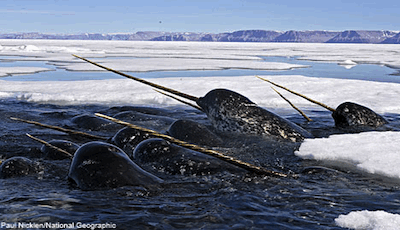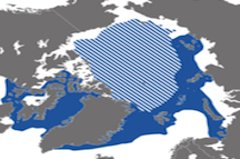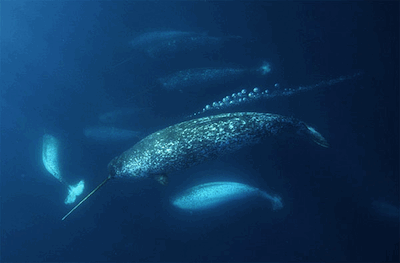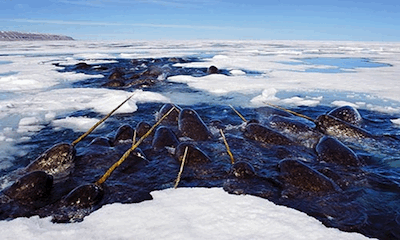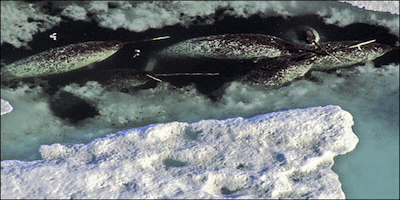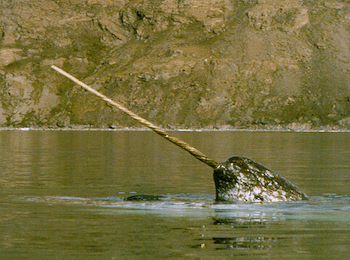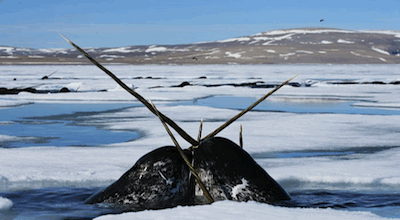|
The Narwhal: Unicorn like creature and deep water diver of the Arctic Ocean.
In the distribution map below we can see the Narwhals primary habitat. The solid blue indicates areas where Narwhals are commonly seen. The striped blue section highlights area's of rare sightings.
In winter they will migrate to the deeper waters of Baffin Bay and find a food supply on the edge of the continental shelf in very deep water under the frozen sea ice.
In order to reach this source of food the Narwhal will dive into the dark abyss at depths of up to 4500 feet. That is 1.5 kilometres beneath the frozen Arctic Ocean surface.
Their favourite foods are Greenland Halibut (Turbot), Cod and Shrimp but will feed on other types of fish as well should the need arise.
The colour of the Narwhal is black with while speckles. When born they are very dark but turn whiter with age. They travel in pods of up to 100 individuals but most in smaller groups of around 10. The name Narwhal means "corpse whale", they often lie belly up for several minutes, this coupled with their colour owes to their strange name.
The Female Narwhal has no Tusk. There have been many theories about a use for the tusk, it has been a mystery for centuries. The Narwhal doesn't seem to use it to fight, catch prey or break ice, the tusk does make the Narwhal unique among Arctic sea mammals. This video by National Geographic may solve some of the mystery. Click this link to watch. On very rare occasions a Narwhal can have a double tusk with two long ivory shafts protruding from the left side of his upper jaw. The Mace carried by the Sargeant-at-Arms for the ceremonial opening each day for the Nunavut Governments Legislative Assembly is made of a Narwhal Tusk.
Providing meat for food and to feed sled dogs and oil to burn in lamps etc.
The early Europeans believed the tusk contained magical power. During the reign on Queen Elizabeth in the 16th century it is said that she received an ivory cup covered with jewels made from a Narwhal tusk for £10,000. Several million dollars in todays currency.
Return from Narwhal to Home Page
|
